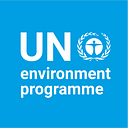Europe’s Refugee Crisis: A Taste of Things to Come?
Oli Brown, Coordinator, UNEP Disasters and Conflicts Subprogramme
This post is the personal opinion of the author and does not reflect the position of the United Nations
Lesvos, Greece
In a small valley, high above the beach in northern Lesvos, a Greek Island just six kilometres from Turkey, lies a cemetery for life jackets.
Thousands of discarded life jackets have been gathered from Lesvos’s beautiful beaches into a managed, albeit ad hoc, landfill that stands more than five metres high and spreads across several hundred metres. Every single one of the life jackets marks a story of individual loss, hope and courage.
Often badly made replicas of proper life vests, these jackets have buoyancy times measured in minutes rather than hours. They represent a slender insurance policy against the terror of launching yourself in a leaky, over-crowded boat for the promise of a better life in Europe.
Collectively, the sight is staggering.
But what is equally sobering is the recollection that this is just a tiny fraction of the current movement of people fleeing war, famine, natural disaster and environmental degradation around the world. For the first time in history, that toll has now exceeded 60 million people.
I’m in Lesvos as part of a workshop organized by the Tallberg Foundation, a Swedish group that aims to shed new light on complex problems by encouraging debate among people from very different backgrounds and perspectives, with people coming from the worlds of government, finance, art, religion and science. The Tallberg discussion was fascinating, and inspired me to try to better understand what the environmental community should be doing to in such a time of crisis.
When you look to the root causes of migration, more often than not environmental change or mismanagement is in there somewhere. The Syrian civil war, while clearly not directly triggered by environmental factors, may have been made more likely by the severe drought that struck the country between 2006 and 2009. This drought, which some suggest may be the worst to hit the region in 900 years, forced thousands of rural farmers to abandon their villages and move to urban centres, thus swelling the country’s cities and putting pressure on jobs and resources. As US Secretary of State John Kerry said in 2015: “I’m not telling you that the crisis in Syria was created by climate change. But the devastating drought clearly made a bad situation a lot worse.”
Meanwhile, since 2008 an average of 26.4 million people have been displaced from their homes each year by disasters brought on by natural hazards. This is the equivalent to one person every second.
The prospect may seem devastating, but the truth is that we need to prepare for more frequent and more extensive such events in future. The world population is likely to exceed 9 billion by the middle of this century; climate change will increasingly impact sea levels, agricultural production and the ferocity of weather events around the world; and consumption of our finite resources continues to rise.
We also need to ensure that our humanitarian responses to those events minimizes their environmental footprint.
This is not so much on pure environmental grounds: clearly the environmental impact of humanitarian crises is less of an immediate priority than the urgent need to save lives, and feed, shelter and clothe displaced people. But it’s important to remember that poorly planned humanitarian responses can create a whole series of unintended consequences that worsen the prospects of the displaced people and the communities in which they end up. Water pollution can spread disease and the sudden influx of thousands of new people to an area can put pressure on scarce resources such as firewood and water.
UNEP will host a high-level panel on environment and displacement on 25 May, during UNEA-2. This will be a critical opportunity to get the international environmental community to think about these issues. The scale of the global humanitarian challenge, both now and in future, demands that we all play a role in finding humane and effective solutions that enable people to live in dignity and safety.
